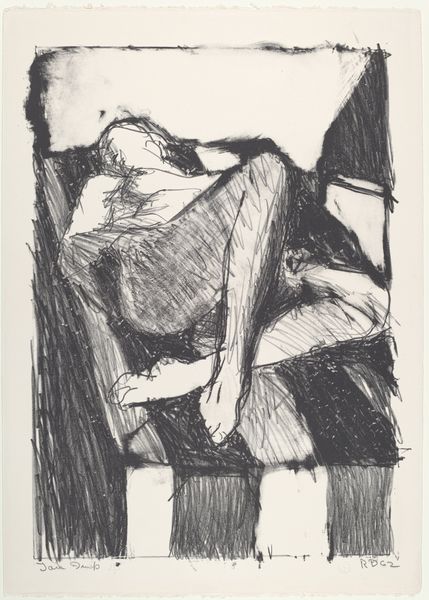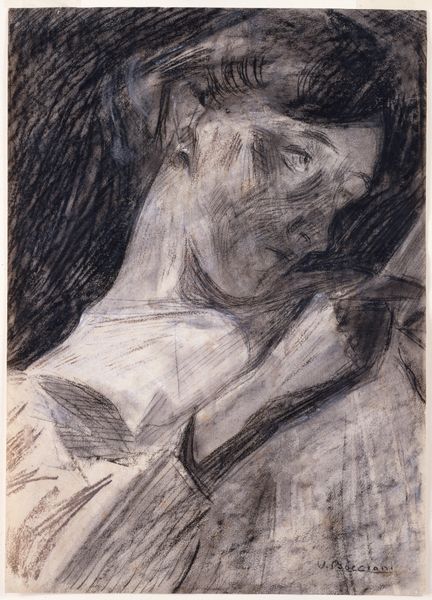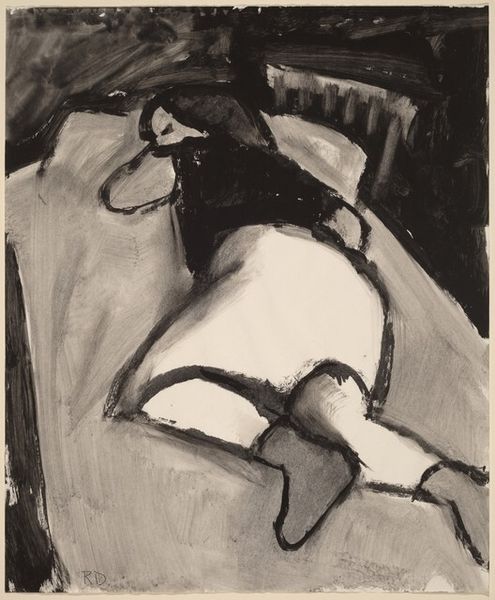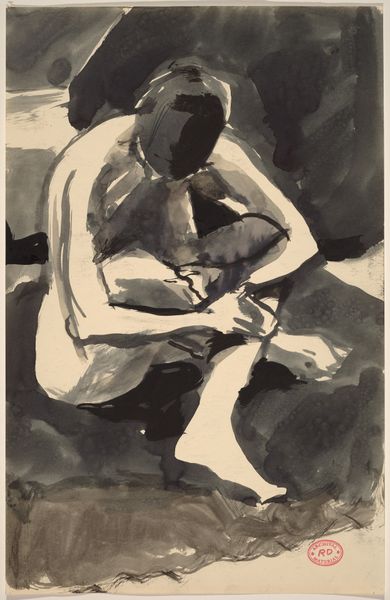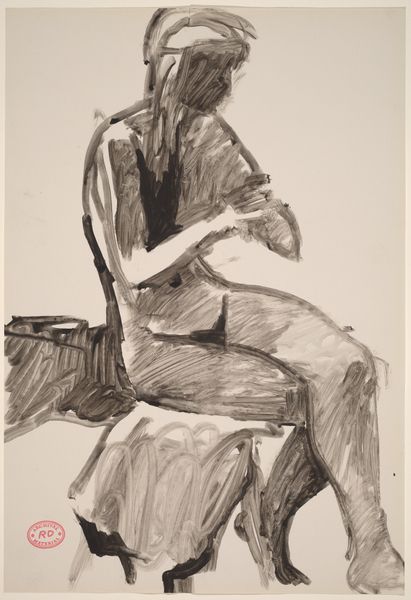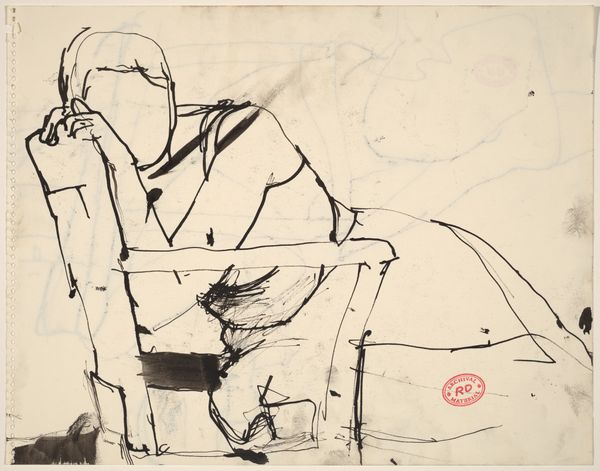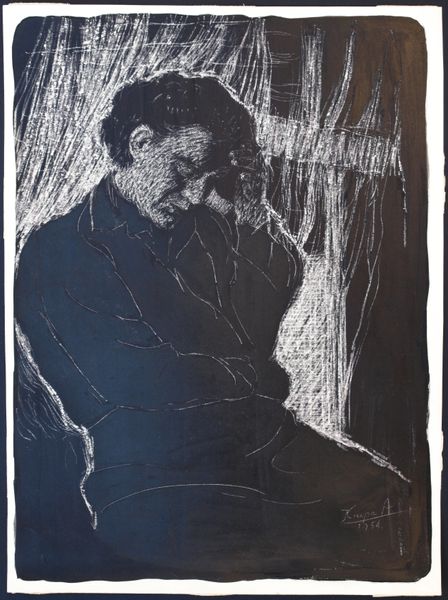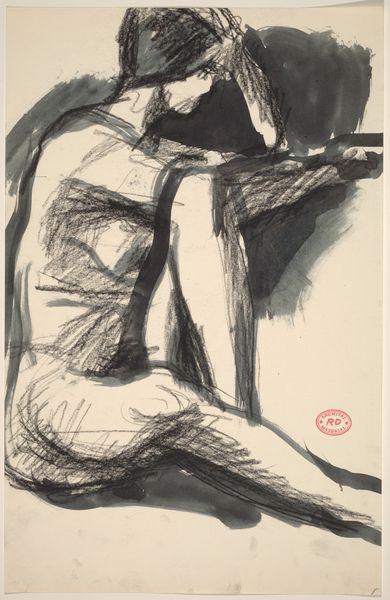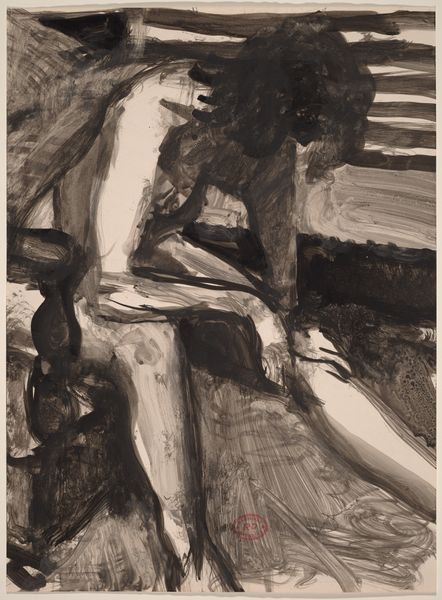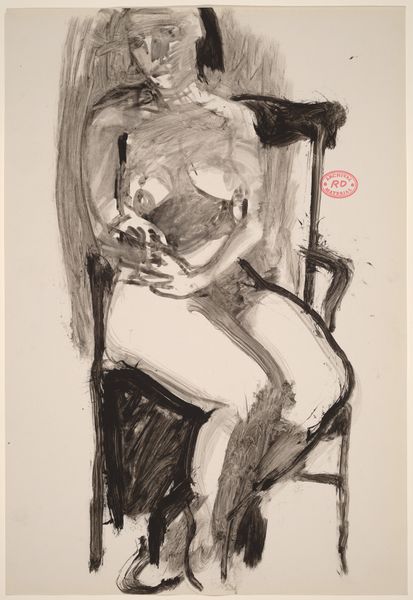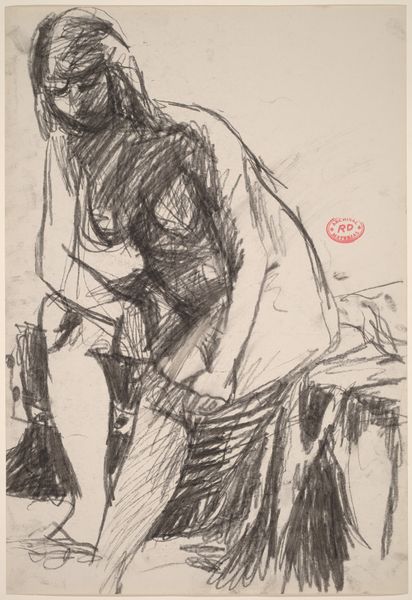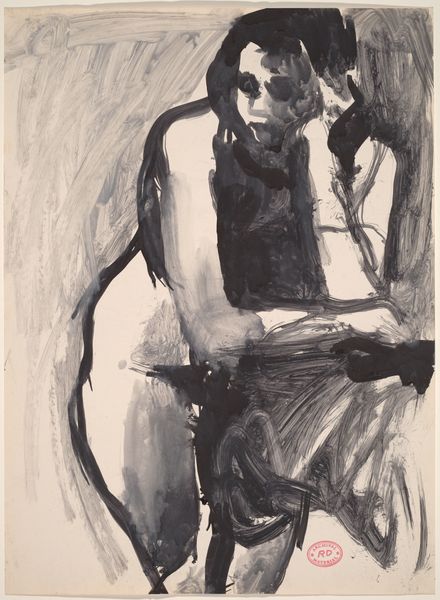![Untitled [seated woman crossing her arms on her knees] by Richard Diebenkorn](/_next/image?url=https%3A%2F%2Fd2w8kbdekdi1gv.cloudfront.net%2FeyJidWNrZXQiOiAiYXJ0ZXJhLWltYWdlcy1idWNrZXQiLCAia2V5IjogImFydHdvcmtzL2E0ZGU1ZDZkLTcxZWQtNGUyNi04Mzc0LTQ1YmFlZjNmNWRmZC9hNGRlNWQ2ZC03MWVkLTRlMjYtODM3NC00NWJhZWYzZjVkZmRfZnVsbC5qcGciLCAiZWRpdHMiOiB7InJlc2l6ZSI6IHsid2lkdGgiOiAxOTIwLCAiaGVpZ2h0IjogMTkyMCwgImZpdCI6ICJpbnNpZGUifX19&w=3840&q=75)
Untitled [seated woman crossing her arms on her knees] 1955 - 1967
0:00
0:00
drawing, impasto, charcoal
#
drawing
#
charcoal drawing
#
figuration
#
charcoal art
#
impasto
#
bay-area-figurative-movement
#
pencil drawing
#
abstraction
#
portrait drawing
#
charcoal
#
charcoal
Dimensions: overall: 43.2 x 31.8 cm (17 x 12 1/2 in.)
Copyright: National Gallery of Art: CC0 1.0
Curator: Wow, there’s a storm brewing on that page, wouldn’t you say? All that heavy charcoal… Editor: This is an "Untitled" piece—that we know of—depicting a seated woman, charcoal on paper, created by Richard Diebenkorn sometime between 1955 and 1967. A decade where he explored the figure alongside abstraction. Curator: That charcoal… it's laid down so thick in places. Almost sculptural, isn't it? Like he attacked the page with feeling. It’s oppressive—you can almost feel the weight of her weariness. Her posture is so closed off; arms crossed, head down… it screams internal struggle. Editor: Consider the price point for charcoal during this period, relative to oils. A study like this was economical—rapid. Did the accessibility and immediacy of the material inform Diebenkorn’s gestural marks and his working method here? Curator: Good question! Maybe charcoal felt less precious, more…expendable? So he could risk more. It's funny, you know. The art world often fetishizes "precious" materials, like gold leaf or lapis lazuli. But sometimes, the most profound emotions come out when you're working with something humble, something ordinary. Editor: Agreed! And notice how Diebenkorn uses the white of the paper—a fairly standard paper—so purposefully? It’s not just absence of charcoal. It's acting as the light in the composition, right? That material contrast gives form to the figure and activates negative space around her. The material realities are that it’s probably cheap newsprint—and if it is, that begs certain historical questions… Curator: Like what? How readily available it was? Editor: Exactly! Was he using it because it was common, plentiful—the material equivalent of plain speech for an artist looking to get real and turn away from "preciousness?" Food for thought. Curator: Yes! This image lingers… I’m now thinking not just of *her* burdens, but of Diebenkorn himself at that moment, what he was wrestling with as an artist. It feels… visceral, immediate, even now. Editor: I’ll take away a renewed interest in the materials of the everyday, seeing them as choices laden with historical meaning, informing the art in ways we easily overlook.
Comments
No comments
Be the first to comment and join the conversation on the ultimate creative platform.

